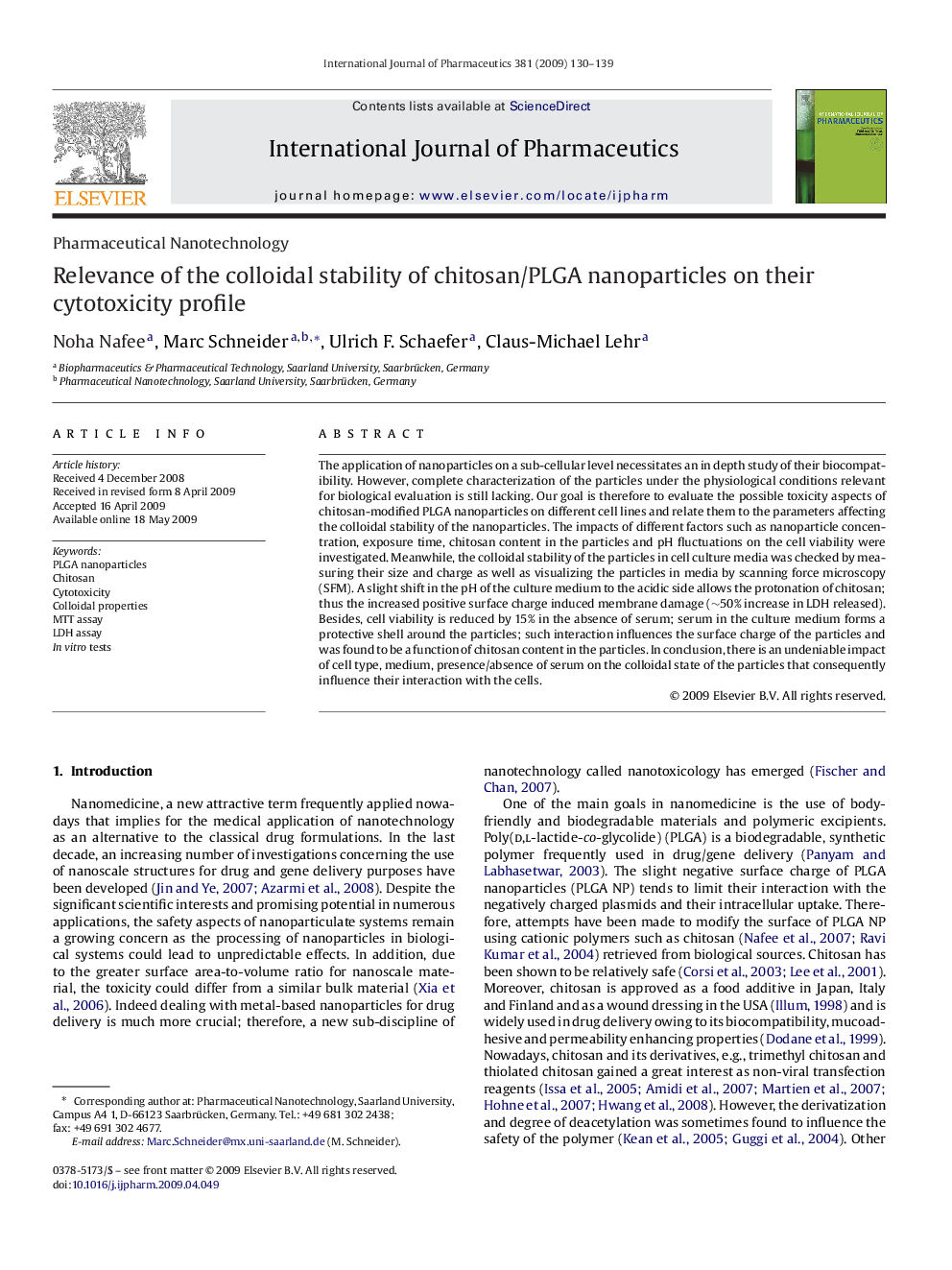| Article ID | Journal | Published Year | Pages | File Type |
|---|---|---|---|---|
| 2504442 | International Journal of Pharmaceutics | 2009 | 10 Pages |
The application of nanoparticles on a sub-cellular level necessitates an in depth study of their biocompatibility. However, complete characterization of the particles under the physiological conditions relevant for biological evaluation is still lacking. Our goal is therefore to evaluate the possible toxicity aspects of chitosan-modified PLGA nanoparticles on different cell lines and relate them to the parameters affecting the colloidal stability of the nanoparticles. The impacts of different factors such as nanoparticle concentration, exposure time, chitosan content in the particles and pH fluctuations on the cell viability were investigated. Meanwhile, the colloidal stability of the particles in cell culture media was checked by measuring their size and charge as well as visualizing the particles in media by scanning force microscopy (SFM). A slight shift in the pH of the culture medium to the acidic side allows the protonation of chitosan; thus the increased positive surface charge induced membrane damage (∼50% increase in LDH released). Besides, cell viability is reduced by 15% in the absence of serum; serum in the culture medium forms a protective shell around the particles; such interaction influences the surface charge of the particles and was found to be a function of chitosan content in the particles. In conclusion, there is an undeniable impact of cell type, medium, presence/absence of serum on the colloidal state of the particles that consequently influence their interaction with the cells.
